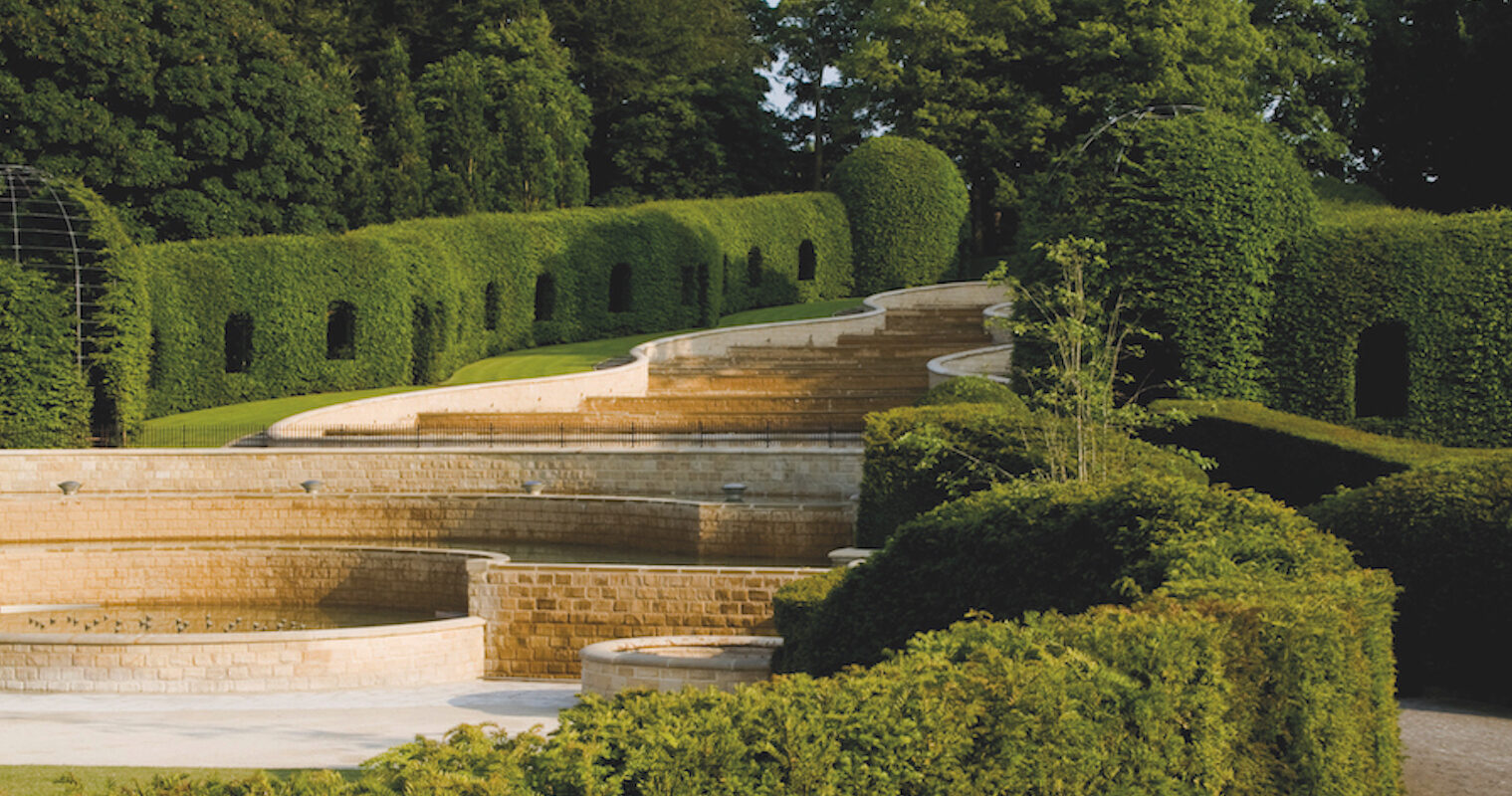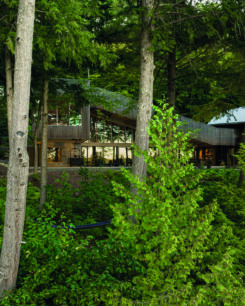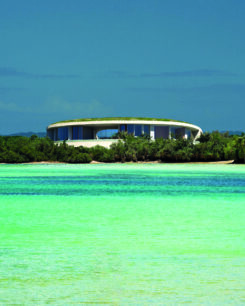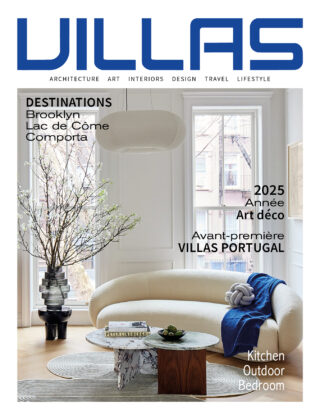Sommaire
Ecology and energy management have become its allies, driven by a desire to combine traditional building techniques with technological innovations to invent a virtuous future. Belgium is no exception in this field, showing an eagerness to move away from concrete and to embrace experimental research by focusing on bio-sourced and living materials. One fine example is the Bento Architecture studio, which is exploring the qualities of mycelium, derived from mushrooms. It was one of the highlights of this year’s Venice Biennale. But what could be more alive than nature itself, which landscape architects are recomposing in their own image? Nature paves the way to a brighter tomorrow for the sons of Jacques Wirtz, Erik Dhont and Bas Smets, a path along which philosophy meets architecture. Philosophers and politicians will not be the ones to change the world, but, who knows, maybe the architects who rethink the balance between town and country will!
Dieter Vander Velpen
Dynamic couture architecture that balances minimalism and luxury.
Dieter Vander Velpen’s powerful couture architecture makes hearts beat faster all over the world. He transforms customer’s wishes into an overarching aesthetic, right down to the smallest detail, just as a fashion designer would. Although Vander Velpen likes working with neutral tones and high-quality natural materials such as stone and wood, he keeps his interiors exciting by playing with contrasts between light and dark, hard and soft or smooth and rough. This tactility makes the designs dynamic, helping him to achieve a perfect equilibrium between minimalism and luxury.
In the ten years since interning at Vincent Van Duysen Architects and Adjaye Associates, Vander Velpen has built an office of fourteen (interior) architects, with projects spanning from residential to hospitality and from his hometown in Antwerp to Tel Aviv and Los Angeles
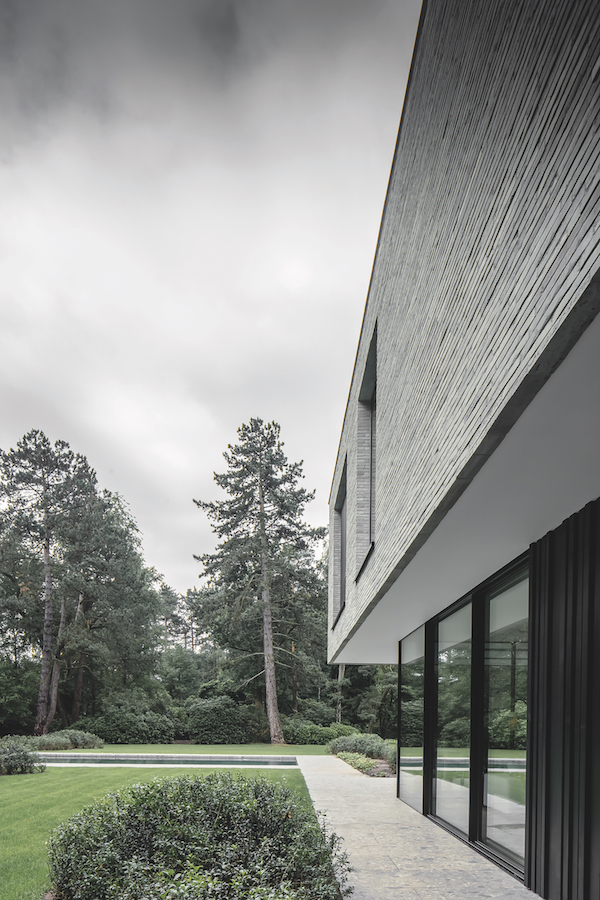
Cafeine.be
Eric Dhondt
He creates enchanting urban landscapes and gardens with infinite precision and poetry.
Based in Brussels and Geneva, Erik Dhont founded his own landscape architecture firm in 1989 and works with a multidisciplinary team. His projects draw on his extremely lucid knowledge of nature and the deep respect he feels for it. Research is the cornerstone of his designs, and his botanical choices strike a subtle balance between his practice, the natural setting and the built environment to achieve the most perfect harmony. Renowned for his experience in restoring and revitalising gardens and landscapes with a particular historical or heritage background, he always gives priority to easy maintenance and the future development of the site. Among other references, he has designed a park for Dries Van Noten and created the garden for the Picasso Museum in Paris. He is also behind community vegetable gardens, farmyards and dune gardens, and has worked on numerous urban and landscape projects in Switzerland, France, Germany and further afield, in California and the Azores.
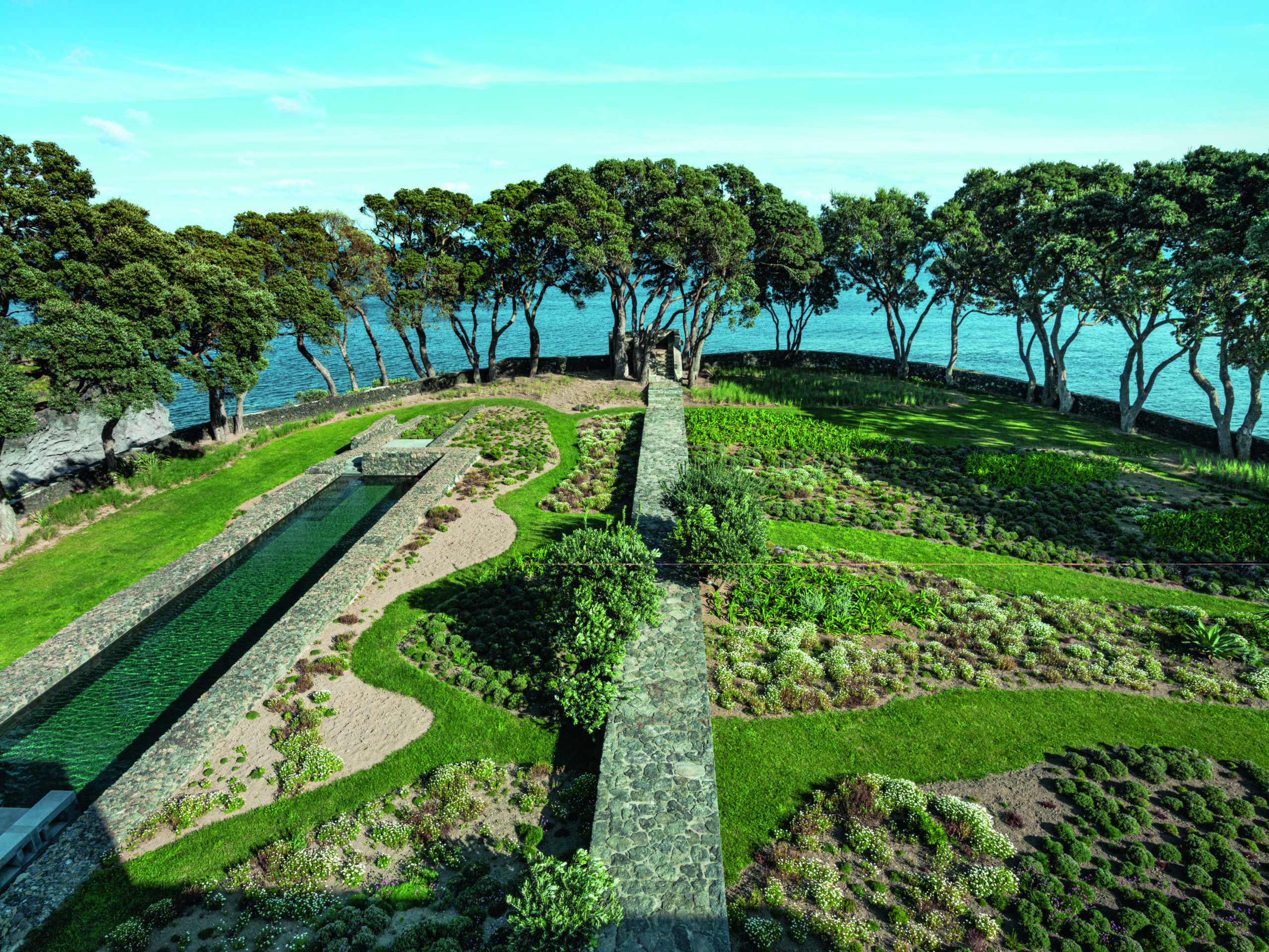
Azores
Bento Architecture
How can architecture adapt to a world of finite resources and cities be turned into places that produce rather than consume?
In response to the construction industry’s reputation as one of the worst polluters, this group of young architects launched a project in 2020 that sets out to “build differently and leave behind the concrete model”. Their ecological approach revolves around experimentation and research into living natural materials, focusing on mycelium derived from fungi. This biosourced material, which can be used to produce bricks or panels, has a very low environmental impact and can be released into nature without polluting the soil.
Following the departure of François Willemarcq, Corentin Dalon has today joined forces with Florian Mahieu and Charles Palliez. He brings his knowledge of earth construction, gleaned with CRAterre in Grenoble. Bento Architecture’s ambition is “to give concrete shape to its initial research and discoveries in the form of architectural, installation and furniture projects (notably Stool17)”. An award-winning approach. A Terra Fibra Award 2021 finalist and a Green Solutions Award 2021 finalist in the Energy and hot Climate Category in collaboration with L’Harmattan architecture for Xèwa Sowé, a children’s centre in Benin, it also won the Europan 16 Architecture Center for Regenerative Materials competition, proposing to transform CIVA, a Centre for Information, Documentation and Exhibitions on the city, architecture, landscape and urban planning, into an experimentation and production hub. It was also co-curator, with the philosopher Vinciane Despret, of the Belgian pavilion “In Vivo” at the last Venice Architecture Biennale, which closed its doors in November.
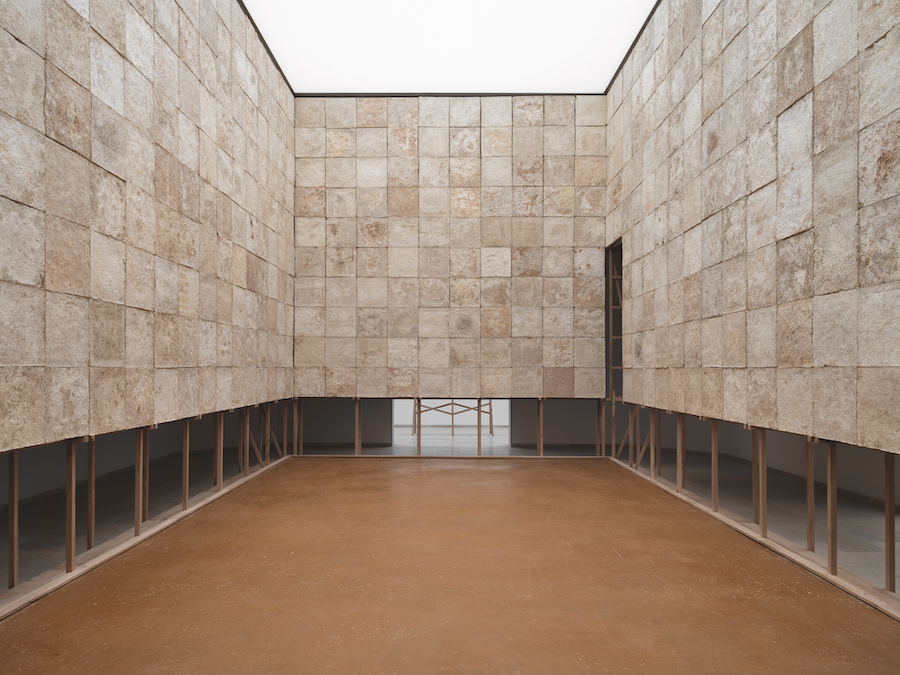
Ugo Carmeni | BELGIAN PAVILION at the Venice Architecture Biennial 2023
Awaa
“Are we all architects”, “Another wild architectural adventure” or “A Wittock Architectural Association”, 4 letters that are open to your interpretation
Charly Wittock is an advocate of open architecture and enthusiastically invites his clients to be active stakeholders in the development of their joint project, especially so if they are not architects. Surrounded by consultants from a variety of fields, AWAA is an agency that brings together professionals with different areas of expertise and that works internationally. The agency considers architecture, first and foremost, as a human adventure, and the best projects as those that put the spotlight on a certain innocence.
These experts have turned the diversity of their work into a strength. Their current projects take them to Sicily, where they are creating a large organic farm by renovating beautiful ruins, showing the same respect for the past as for cutting-edge technology. They are also working on a project in Rwanda, rediscovering local building techniques to create a hotel of suites housed in huts on the shores of Lake Kivu, while elsewhere they are blending Balinese architecture with Costa Rican construction techniques. A second winery project near Brussels, perfectly espousing the landscape, echoes that of the Bousval winery. In the field of sustainable and agricultural architecture, AWAA is also working on a pioneering hemp farm in Belgium. From the residential, which offers an intimate and rich source of human exchanges, to the industrial and commercial and the opportunities it brings to explore, learn and take controlled risks, to the cultural, which is fertile ground for our wildest dreams, reined in by a good dose of pragmatism, AWAA is a trailblazing mastermind of the architecture of tomorrow.
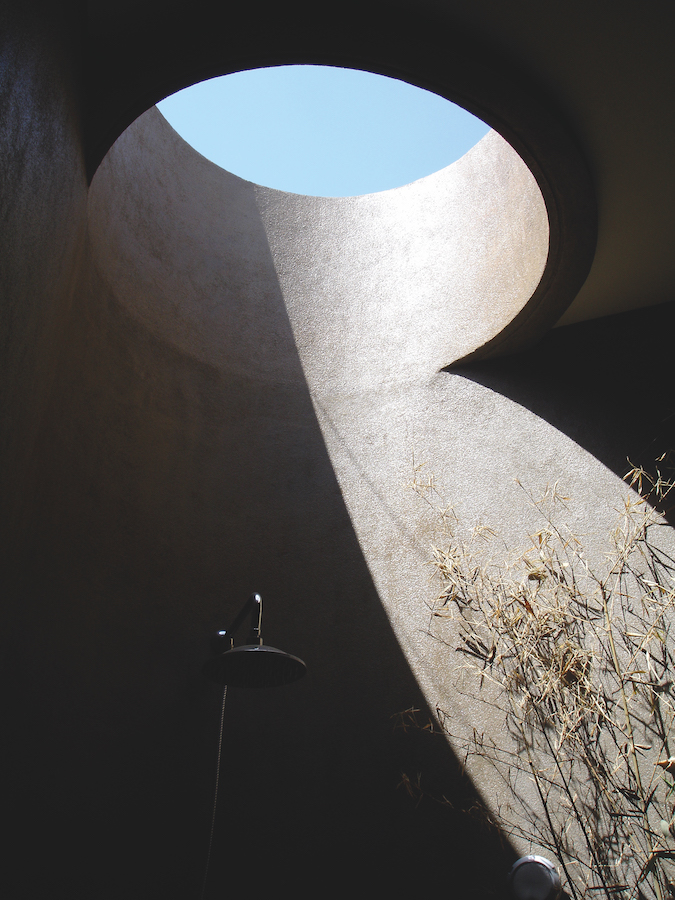
Purodieces project in Costa Rica
Jacques Wirtz & fils
No one knows what paradise is, but everyone knows it’s a garden! Jacques Wirtz transformed these edens into works of art, combining a quest for innovation with a love of classicism. His sons are following in his footsteps.
He was a man who pushed elegance to the point of discretion. Yet his exquisite gardens left their mark on twentieth-century landscape design far beyond our borders. Jacques Wirtz (19242018) designed gardens that focused above all on the harmony that links the house, the heart of the person who lives there and the nature that surrounds it. “A successful garden,” he would say, “is a garden that you feel has always been there.” This landscape architect was intuitively capable of “moving smoothly from total restraint to a wild, rich cornucopia”.
His gardens are full of temperament, each in its own way and each in its time forging Wirtz’s reputation as an upholder of controlled biodiversity, organised and designed by him for the pleasure of their beneficiaries. This holds true for his private and public gardens. Free of stylistic prejudices and not bound to any particular movement or school, Wirtz made his mark with his highly personal vision of gardens, combining pure vegetation and positive minerality, with handsome trees always an essential hallmark. Based in Schoten, he founded the firm Wirtz International Landscape Architects and gained a reputation for his glorification of topiary art (typical of northern European gardens), giving it a whole new lease of life. In Paris, he won the competition to renovate the gardens of the Carrousel du Louvre. He was also asked to landscape the grounds of the Élysée Palace (under Mitterrand), launching a “replanting” campaign and creating ponds. But what explains his success? Martin and Peter Wirtz, his sons, will tell you that their father had an uncommon capacity for hard work, that his intellectual curiosity was constantly on the alert and that nothing could stop him. Undoubtedly a leading landscape artist of his time.
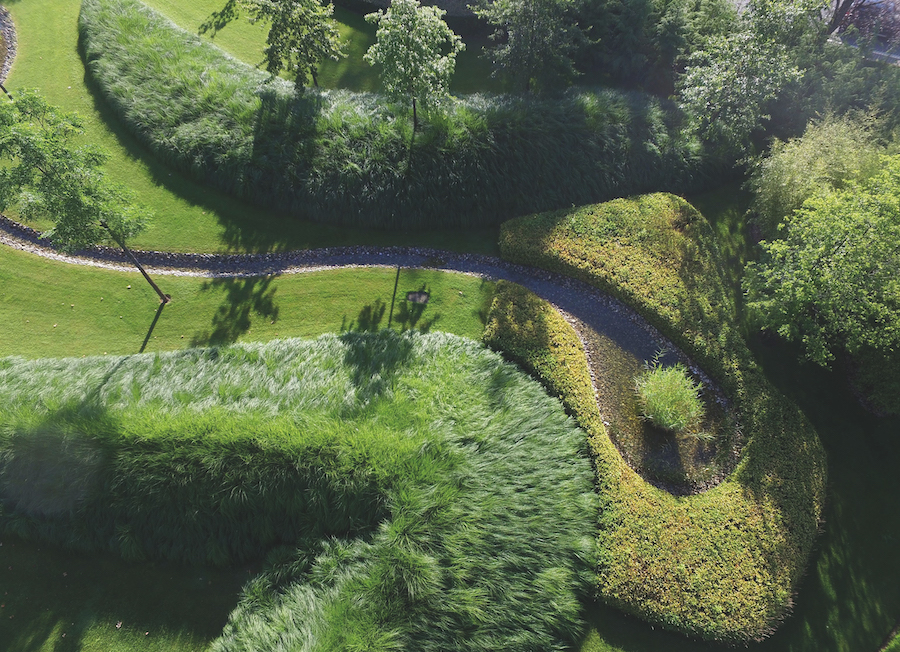
Wirtz International – LANDSCAPE ARCHITECTS
Bas Smets
Bas Smets has been chosen to landscape the surroundings of Notre-dame Cathedral. The heart of Paris in the green hands of this 2.0 “landscape inventor”, as he likes to call himself.
“I think long and hard about how the gardens that I design today will look decades from now.”
We can change the climate by changing the landscape. Our cities need to be converted into complex eco-urban systems. This philosophy, among other solid arguments, won 48-year old Bas Smets the contract to rethink and redevelop the forecourt and gardens of Paris’s Notre-Dame Cathedral, right down to the surrounding streets. The choice was also motivated by the sobriety of the proposed project. It is comprised of a “rectangle” of greenery, the layout of which continues the interior geometry of the cathedral on the outside, and of a promenade featuring a long arch of trees to create more shaded areas.
All of this is cooled by a simple rainwater run-off system (recovered and stored in the car parks) that will irrigate the forecourt in the heat of summer. This eminently eco-responsible project is being carried out in collaboration with the urban planning firm GRAU and, for the heritage section, with the architectural firm Neufville-Gayet. “Imitating nature is not an end in itself,” points out Bas Smets. On the contrary, we have to use its logic to compose a landscape and imagine what would have happened without this human intervention. This is why the landscape architect-engineer works with time, thinking long and hard about growth, the seasons and cyclical transformations. “We think about how what we build today will look decades from now.”
Among the projects developed around the world: a (very) high perched garden in Hong Kong, the vertical garden of the Mandrake Hotel in London, the park of the Luma Foundation in Arles (in dialogue with the architecture of Frank Gehry), a seafront (Himara) in Albania, the greening of the Tour & Taxis site, and so on. Not forgetting the Memorial nestling in the Sonian Forest, created in honour of the 32 civilians killed in the terrorist attacks in Brussels in 2016.
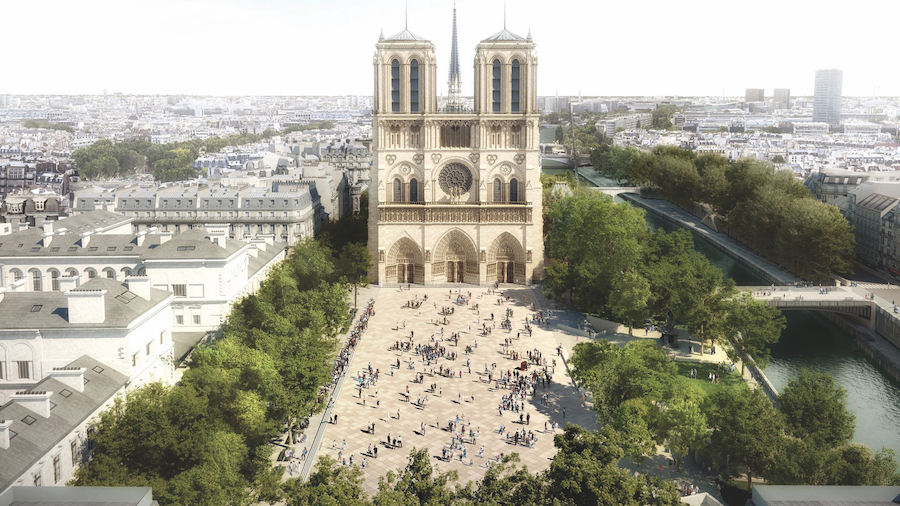
Alma Studio on behalf of the BBS consortium | ORECOURT OF NOTRE-DAME DE PARIS (VIRTUAL IMAGE) – ©
